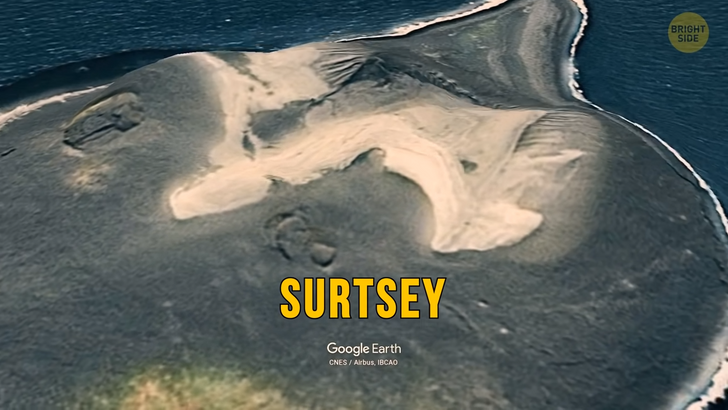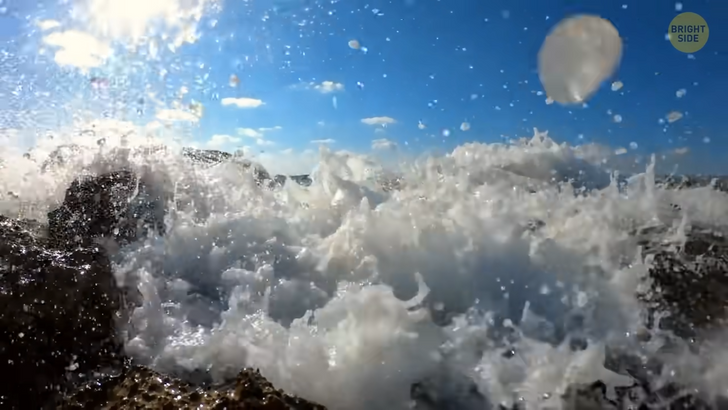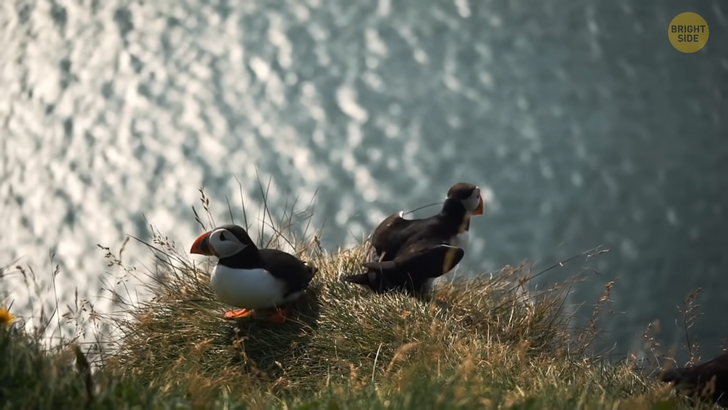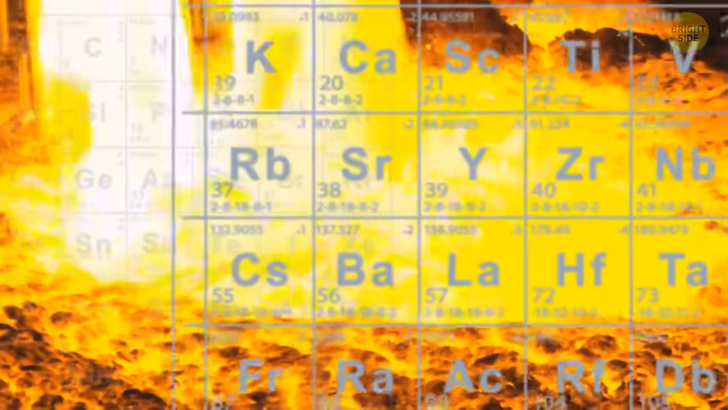My MIL Made a Scene at My Birthday Party and Got Exactly What She Deserved

It’s 2010. You’re in the Japanese waters of the Pacific Ocean, about 745 miles south of Tokyo and very close to the island of Iwo Jima. The sky is clear. There are almost no waves. A heavy low rumble comes from somewhere deep under the sea. It scares away all the flying gulls. Then, it gets quiet. Too quiet. It seems that even light waves don’t dare to make a sound. Suddenly, a small bubble rises to the surface of the water. Then, thousands of air bubbles start moving up one after another.
The water begins to boil and heat up. Its temperature is so high that you can cook eggs or pasta in here. The boiling area grows to the size of a stadium. A huge amount of steam is released into the air. You can see an outline of some huge object through the boiling water. Then, everything stops. The water cools. The amount of bubbles goes down, and the surface of the ocean becomes calm again. That year, an underwater volcano erupted at that specific location. Fortunately, it didn’t bring any serious consequences. In August 2021, the eruption repeated.

But this time, everything wasn’t limited to the bubbling water. The Japanese Coast Guard reported strong volcanic activity in the region. Hot steam and gases came out of the water and rose into the air to a height of 10 miles, which is about twice the height of Mount Everest. The huge awakened volcano began to slowly lift to the surface. If you took a helicopter ride above this place, you’d see more and more land coming out of the water. This is not just a volcano; it’s a whole island in the shape of a horseshoe. And this is just the beginning.
Seismologists say this island is the tip of a huge volcano. It fills the sky with smoke and ash. The air temperature is rising. Scientists continue to monitor the situation. They believe the volcano can completely get out of the water. Nobody knows what consequences this may have. This isn’t the first island that has appeared in the waters of Japan. Underwater volcanoes have erupted several times over the past century. One of the most surprising cases occurred in 2013.

That year, a small piece of land was formed next to the already existing island. The underwater volcano that emerged from the water began to grow slowly. At some moment, it connected to the island. After 2 years, the area of this island increased by 12 times compared to the original size. Smoke is always pouring out of this place, and its surface is filled with red-hot lava flows. The volcano is unstable and isn’t going to calm down.
Such phenomena occur not only off the coast of Japan. In the 1960s, a volcano awoke on the southern coast of Iceland. For three whole years, it was coming to the surface and had formed an island by 1967. They called it Surtsey [se-tsi]. Unlike the Japanese Islands, this is where the volcanic eruptions ended. Now the island is one of the most inaccessible places on the planet. Only a few scientists in the world have permission to walk around this place. They want to learn how the plant and animal life of the island are formed without human intervention. This is a unique event, and here’s why.
Underwater volcanoes differ in their behavior from land volcanoes. They don’t explode and don’t release lava flows upwards. A huge amount of water above them creates high pressure. As soon as the magma gets out, the water immediately lowers it to the seafloor. Underwater eruptions don’t normally cause any changes on the ocean surface. So, millions of gallons of lava sink to the bottom, cool down and solidify around the volcano. This lava forms a thick layer of Earth’s rock. To make an island appear on the surface, an underwater volcano needs a lot of magma.

The next eruption creates another thick layer. Millions of years pass, and passive lava flows form mountains. Constant eruptions increase the height of the seabed. Layer by layer, the cooled lava rises higher and higher. And then, one day, it appears on the surface in the form of an island. Often, underwater volcanoes don’t reach the surface and fall asleep forever. Such volcanoes are called seamounts. The tectonic activity also affects the formation of islands. The volcano has a source of magma that comes from the mantle of the planet. The tectonic plate is moving. And a volcano is placed on it. So, the plate can lead the volcano away from the source of magma. When a volcano rises, it can simply move aside and no longer erupt.
From the outside, the volcanic islands look like an apocalypse. Lava spraying in different directions, smog and ash filling the sky... But in fact, volcanoes are not about destruction but the creation of new life. Lava is any hot metal. But the natural lava flowing out of volcanoes is called magma. When it appears on the surface of the ground, various gases and acids instantly evaporate from it, and magma becomes lava. But underground, it’s magma. These molten metals contain trace elements of almost all chemical substances that exist in nature. They enrich the land they’re flowing in.

Ash is also filled with many different elements. The lava hardens, the ash settles, and this creates favorable conditions for the appearance of a rich ecosystem. It can take millions of years to develop. The simplest bacteria appear. They feed on chemical elements coming from the volcano. When you have favorable conditions for bacteria, you get favorable conditions for bigger life forms. Birds flying by also help to develop the new ecosystem. They build nests on the island, bring tree seeds, and plant spores from the continents and other islands. All this enriches life on the volcano.
Volcanoes are isolated places, so unique species of animals, insects, and bacteria can appear only there and can’t be found anywhere else on the planet. However, if the volcano wakes up, it can also destroy the ecosystem. The entire island can be covered with ash and simply lose all vegetation. But then, on the scorched ground, life can appear again. Hundreds of islands around the world appeared because of the eruptions of underwater volcanoes. Hawaii, Indonesia, and Iceland have them on their territory.

Imagine that people settled on a similar volcanic island and built a city there. And one day, the volcano woke up. It once happened 200 miles south of Tokyo. People built a beautiful town right in the crater of an active volcano on the island of Aogashima. In May 1785, the catastrophe began. That day was sunny, and no one could imagine what tragedy was approaching them. At some point, thousands of birds took to the air and flew away from the island. Then, the ground began to shake. A heavy, low sound came out of the town depths. Streams of smoke were coming out of the crater of a green volcano.
The volcano was throwing dirt, large stones, and various debris into the sky. The disaster lasted for several weeks. Since then, more than 200 years have passed, and the volcano has never woken up again. The town was rebuilt after the disaster. Now, this place is so great people don’t want to leave despite the risk of a new eruption. More and more residents are coming to the island. There are many thermal springs, and the waters around the island are rich in fish. But the volcano may wake up at any moment. Fortunately, meteorological and seismological services monitor the situation.

A lake can also form inside the volcano, but you shouldn’t swim in it. In Indonesia, on the island of Java, there’s a volcano with a crater inside. It’s filled with turquoise water. The magma inside the volcano consists of many molten metals and chemical compounds. And the lake gets these substances. The volcano emits sulfur dioxide gases that combine with the metallic lake. This gives the water its strong acidity and turquoise color. The steam coming from the lake is acid. When it combines with air, it ignites. This is visible at night. Sulfur accumulations flare up and illuminate everything around.











